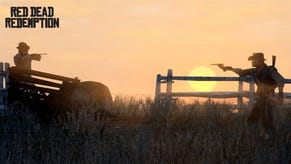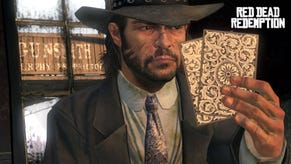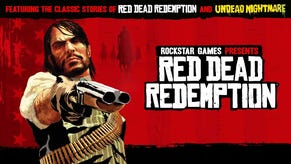Red Dead Redemption on PlayStation has one impressive upgrade
Improved image quality over Xbox back compat, but we had hoped for so much more.
Red Dead Redemption is one of the highest-profile games that has been stuck on seventh-gen console hardware. Rockstar's western epic released all the way back in 2010 on Xbox 360 and PS3, with no proper modern port or PC version to speak of. The best we've had has been backwards compatibility support for Xbox One and Xbox Series consoles - which did at least give us a 2160p presentation on Xbox One X and Series X, dropping back to 1440p for Series S.
Over 13 years later, we finally have an updated release - and there are both positive and negative aspects to the port. We'll be looking at the PS4 version today, tested on the base machine, PS4 Pro and under back compat on PS5. (Our work continues on the Nintendo Switch version but - spoilers! - it does run at native 1080p when docked.)
First up, there is a key improvement to the PS4 version that has a profound benefit for all tested consoles. Image quality comparisons for each PlayStation system stacked up against their Xbox equivalent reveal a much more stable image. Fine geometric elements and foliage seem sharp and solid, while even Series X running at 2160p with 2x MSAA has an unstable resolve with obvious jagged edges.
I initially suspected we were just looking at simple TAA on PS5, but the options menu indicates that FSR2 is actually in use here - AMD's popular temporal upsampling and anti-aliasing solution. The weird thing is that every shot on both PS4 Pro and PS5 seems to resolve to a full 4K resolution, meaning the FSR2 is providing anti-aliasing coverage without a performance benefit, as the game is already running at native resolution. There's a possibility dynamic res is in place, but I didn't spot any evidence of it in my testing. It's unusual for sure, but that seems to be the situation. So, in effect, developer Double Eleven is using FSR2 as a temporal super-sampler - and the benefits are obvious. Xbox consoles retain the 2x MSAA of Xbox 360 and while it's still impressive on One X and Series X in particular, PlayStation just looks smoother and cleaner.
Curiously, the PlayStation code also includes a toggle to switch to FXAA, a post-process AA method. There's a lot more image breakup in this mode, with near-constant shimmering in general gameplay. Expect to see a lot of very rough edges, especially on buildings and other sharply angled geometry. The game is still rendering at native 4K, but the image treatment isn't nearly as good as the FSR2 that you'd otherwise be getting. It's curious that the developer chose not to include the original 2x MSAA, at least as an option.
Beyond image quality, the list of enhancements is quite sparse. Remember that the Xbox Series X and One X are just running the 360 code with a higher resolution, anisotropic filtering, and a negative LOD bias to enhance texture mip-maps, so our point of comparison here is really just the original game viewed through a clearer lens. We really should be getting some extra enhancements on PS5 here, but the improvements are meagre.

One notch in favour of the PS5 comes down to shadow quality. The Series X version, just like the Xbox 360 original, has messy shadows at a distance and rough-looking self-shadows for character models. Resolutions get boosted across the board on the new PlayStation version, with much higher resolution shadow maps in every scenario. I'm not sure this is a complete win though, because the higher resolution combined with the original shadow filtering gives the PS5 a bit of a harsh look in a lot of scenes - clinical, precise and hard-edged. Uniformly softer shadows would probably look more realistic, but I'd still score this as a win for the PlayStation version overall.
Additionally, the PlayStation code does have a slightly different gamma presentation relative to Xbox versions. This looks like an artefact of the Xbox 360's system-level gamma tweaks, which often produced a punchier image on 360 hardware. Your mileage may vary here in terms of preference, but the PS5's more neutral image preserves shadow detail before any TV processing, so I do think that's preferable.
The rest of the game looks much the same between the two consoles. Models still have a sharp, slightly blocky character, with seventh-gen polygon budgets. I couldn't make out any improvement in textures either, and the game still suffers from some very low-res artwork. This includes the main character, whose muddy face should have been a high priority to improve. LODs look about the same between the two releases, with grass extending far into the distance on both machines, but with some noticeable pop-in at times as well. That means the PS3 release's LOD compromises haven't migrated over to the updated PlayStation versions. I would have loved extra visual enhancements on PS4 and PS5 consoles of course, but it really does seem limited to image quality and shadows.
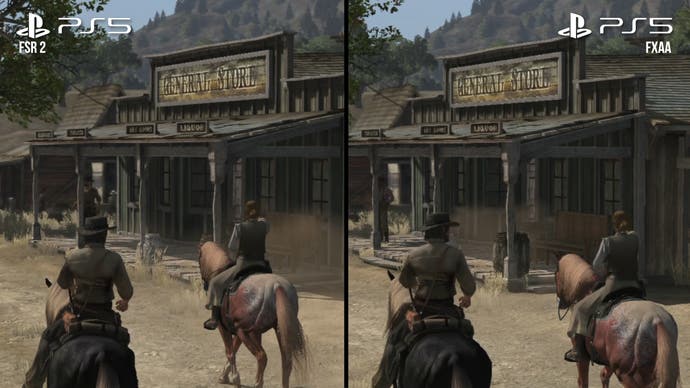
Unfortunately, the game's UI also hasn't been updated to match its new output resolution. Red Dead Redemption still largely uses 720p UI elements, with no enhancement whatsoever for the vast majority of the interface. This was perfectly excusable on the backwards-compatible Xbox versions, but it feels really egregious on the brand-new PlayStation releases. The text and icons just look super muddy here, and don't scale well at all to a 4K set. The exception is the button icons, which do appear to have been redrawn at 4K. These do feature much finer edges than on PS3, and lack the sort of crude, rustic looks of the button icons on seventh-gen consoles. It's perfectly fine, but some of the character has definitely been lost in translation. It would have been great if the whole UI had been redrawn of course, but the button icons are sharp little circles against ugly backgrounds slathered in scaling artefacts.
So far, I've mostly been describing the new version as it plays on PlayStation 5, but older consoles still hold up well. The PS4 Pro version is the PS5 version, of course, but it looks and runs identically to its presentation on the latest PlayStation console, right down to its 30fps output and its support for both FXAA and FSR2 anti-aliasing. That also means that the PS5 doesn't get any unique enhancements above and beyond the PS4 Pro, which is a disappointment. PS4 gets the exact same visuals as PS4 Pro and PS5, but this time rendered at a native 1080p. In the default FSR2 mode, it looks very smooth and sharp with just a bit more aliasing than on the higher-end machines. FXAA doesn't fare nearly as well of course, especially at this lower resolution, and should be avoided. Engage FSR2 though and you're getting both superior resolution and image quality to its Xbox One back compat equivalent.
The Series S back compat version is also a bit questionable. The Xbox 360 code also runs here under backwards compatibility, but this time with a 2x resolution boost on each axis instead of a 3x resolution boost, so it resolves to 1440p. The aliasing is pretty annoying here and you get the impression that the game would fare a lot better with the PlayStation version's FSR2, even if the raw rendering resolution remained the same. Bearing in mind the limited resolution on Xbox One as well, maybe there was a case for making an Xbox version of the new release too.
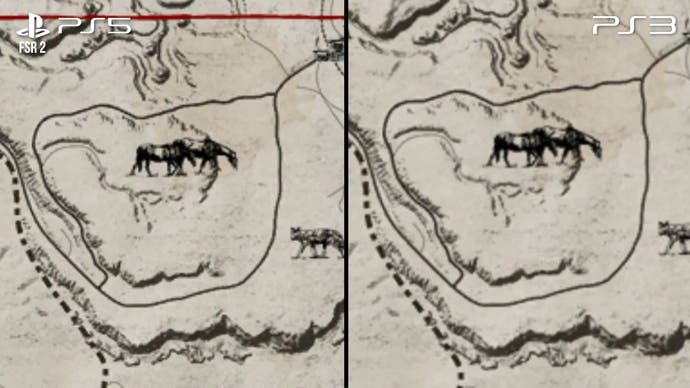
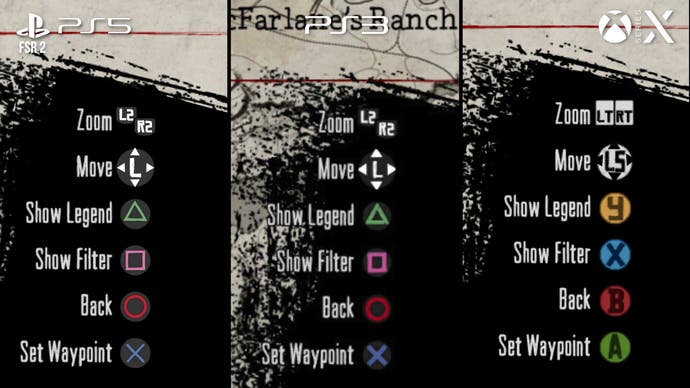
Performance in Red Dead Redemption across all tested PlayStation consoles is straightforward, for the most part. The game operates with a 30fps frame-rate cap, and hits that target perfectly as far as I can tell. I didn't spot a single dropped frame while playing and my performance capture didn't turn up any trouble spots either. Granted, I didn't have access to later-game content but the Undead Nightmare expansion is pretty explosive right out of the gate, and it ran flawlessly. Both FSR2 and FXAA seemed to perform exactly the same here.
That said, it's not a totally even 30fps output. Certain cutscenes on the new PlayStation versions operate with an animation pacing issue, where some animations will slow down for a few frames at a time. In practice, it looks like the game is constantly stuttering, at least when you have linear movement like a swooping camera pan to make the inconsistency obvious. This doesn't apply to all cutscenes, but when it is present it can be quite annoying. The Xbox versions of the game don't appear to suffer from this issue. Curiously, this is quite similar to the animation issues that afflict the GTA 5 re-releases on current-gen and last-gen consoles.
Plus, Red Dead Redemption operates without any significant form of motion blur. The edges of the screen are blurred slightly during fast camera movements, but this is very difficult to notice while playing. Red Dead has a very staccato and slightly choppy feel while playing at 30fps here, which could have been mitigated by a high-quality motion blur like we saw in its 2018 prequel.

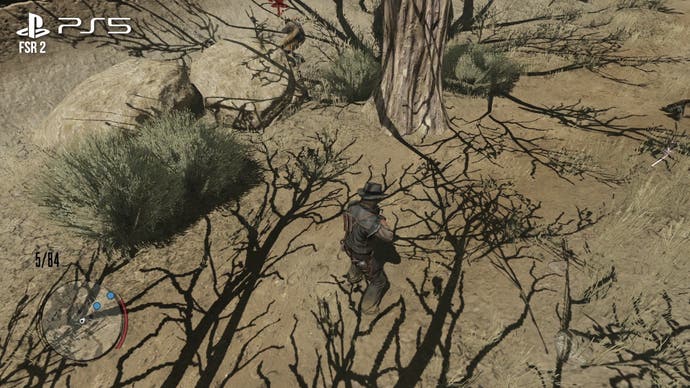
Red Dead Redemption is still a great-looking game in a lot of respects. Its wide-open plains and beautiful lighting looked very impressive at the time of release and still hold up reasonably well in 2023. It's the kind of game that doesn't really need a major overhaul to work well on modern systems - but even so this is a very barebones effort.
There are no upgrades to textures or models, no high-frame-rate option for PS5, the UI is still largely composed of 720p assets, there's no version of the updated game for Xbox consoles, no version of the updated game for PC, no new post-process effects, and it now suffers from a significant animation issue during some cutscenes. It's far from the kind of premium remastering effort that this game deserves, especially for the price.
I don't think the game needs a lot of work from a visual perspective, but a few key upgrades would go a long way. The lack of support for higher frame-rates feels particularly egregious, as we know the Xbox 360 version of the game emulated on PC can hit 60fps with only very minor issues. To be fair, the introduction of FSR2 into these new versions does a lot for the game's image quality. Red Dead Redemption has the sort of smooth and clean resolve that the artwork was really begging for in earlier releases, and virtually all of the aliasing in high-frequency detail is gone. It's a nice upgrade, and with similar attention in a few spots this could have been a very decent remastering effort.
Ultimately, the new PlayStation renditions of Red Dead Redemption are serviceable but very conservative updates of a classic game. It'll satisfy those who are keen to revisit Rockstar's wild west epic, but the game deserved a more substantial upgrade.





